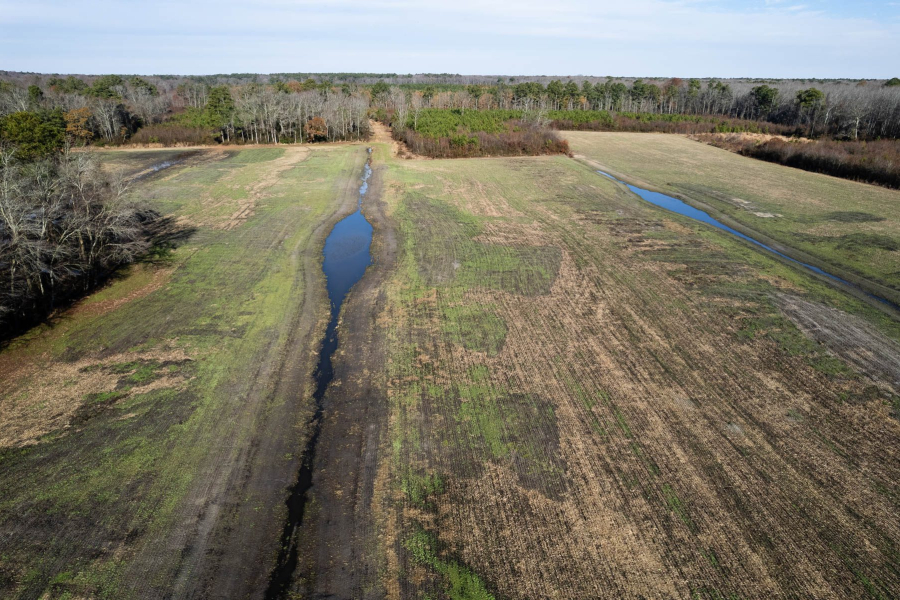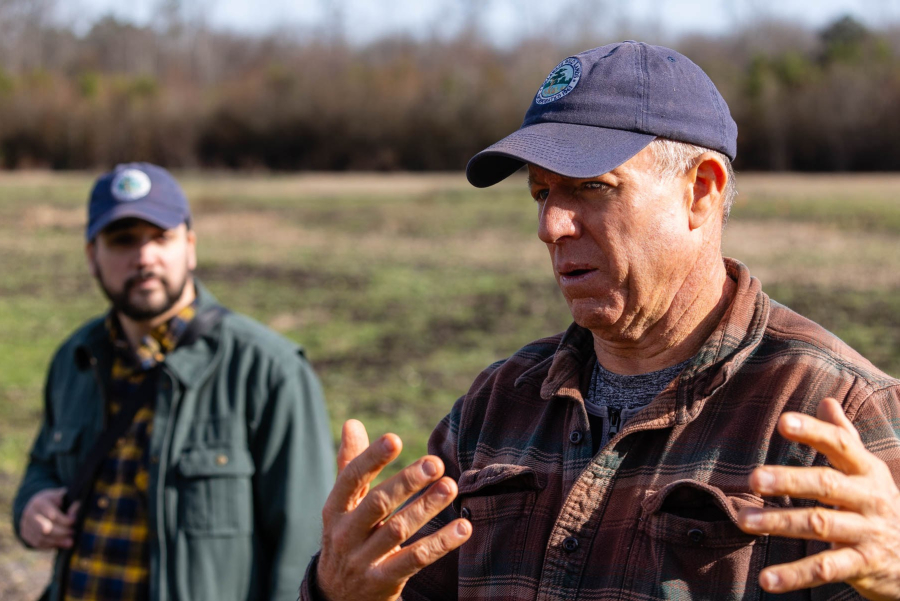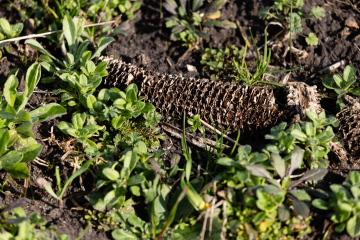Twenty-five acre farm in Delaware begins its transition to a multi-habitat wetland
U.S. Fish and Wildlife Service and Delaware Wild Lands restore a critical landscape

Since the late 1970s, the Delaware Wild Lands has had in its possession a 25-acre farm wedged in between the Bald Cypress Branch and Pocomoke River in Frankford, Delaware.
Over the years, the nonprofit leased the property out to local farmers in an effort to support the state’s substantial agricultural economy while ensuring that the property wouldn’t be developed. Only a 30-minute drive to the beach, the farm and similar properties were under pressure from new housing and commercial developments, even back then.
“In the early days, the '60s to '70s, the organization was interested in collecting as much land as possible,” said Sussex County Project Manager Ron Haas with Delaware Wild Lands.
In 2023, the organization decided to make a change. The farm’s soybean and corn production was being damaged by deer, and flooding was often an issue due to the property’s proximity to the two tributaries. The nonprofit took the farm out of production and began to look for new ways of maintaining the land.
“It wasn't a super productive field,” said Andrew Martin, a field ecologist with Delaware Wild Lands. “So it didn't really hurt our feelings too much to take it out of production.”
That year, the nonprofit began the process of turning the Sussex County farm into a forested wetland. Haas and Martin created an outline of the project, and then approached Brian Jennings, a biologist with the U.S. Fish and Wildlife Service (USFWS), to provide engineering expertise.
Funding for the project came from an EPA Chesapeake Bay Program Office grant, funded by the Infrastructure Investment and Jobs Act (IIJA), and provided to the State of Delaware. This grant programs focuses on advancing Chesapeake Bay Program priorities, such as restoring forest buffers, enhancing urban tree canopies and restoring wetlands.

Construction on the property lasted from September to October 2023. As a farm field, the site had a handful of narrow irrigation ditches meant to drain the land after rain. Jennings worked with engineers to flatten out these long ditches to function as swales, which are slightly sloping, sunken areas natural to a wetland. On those same ditches, engineers put in “ditch plugs” that fill previously empty pockets of land to improve hydrology. At the end of the swales, the team also put in three impoundments. These are small, pond-like features that are natural to a wetland and provide a variety of insect life for waterfowl to feed on.
“They've done a tremendous job on the site work,” said Haas, speaking about USFWS.
Throughout the property, the two organizations planted native hardwood trees such as bald cypress and Atlantic white cedar. The team also planted native grasses and shrubs that they plan on keeping as “early succession habitat,” which are essentially plants kept in the early stages of growth through controlled fires. Delaware Wild Lands envisions this part of the property to function as a savanna-type habitat where mammals and birds graze for insects.
Put together, this mix of habitat will benefit a range of wildlife. According to Jennings, the wetland is expected to provide habitat for reptiles such as the spotted turtle and migratory birds. The savanna habitat will hopefully be a hotbed of insect and pollinator life to feed those birds. And the hardwood trees will support an array of wildlife, including insects, birds and mammals.
“With habitat diversity, you get more species diversity,” said Jennings.

The new property will also have significant water quality benefits. Though located in central Delaware, the wetland is still in the Nanticoke River watershed, which means all that local runoff eventually drains to the Bay.
Wetlands and forests both filter nutrient pollution that gets washed off the land, keeping it out of our waterways. During storms, they also soak up a lot of the rainwater that would otherwise pour into streams and cause erosion. When it comes to meeting the Bay’s water quality outcome, restoring wetlands and forests is among the most important actions a community can take.
The Delaware Wild Lands wetland is still in its infancy, as it will take several years for the trees and other plant life to grow in. Still, the property is on the right track toward becoming a mature forested wetland after several decades of being a farm.
Since 1961, Delaware Wild Lands has played a pivotal role in the acquisition and regulatory protection of 31,600 acres of land. They currently own and actively manage 21,600 acres to enhance biodiversity and support traditional uses of the land, such as agriculture. USFWS often partners with local organizations such as Delaware Wild Lands to create high-quality habitat for threatened and endangered species.
These kinds of partnerships are key for communities trying to maintain their natural resources amid a growing population. According to Haas, many of the people living in Sussex County understand the importance of preserving land.
“They see the development coming from east of [Route] 113, and they start to think, do I really want to see all this development or I want to see land preservation?”

Comments
If you're interested, come over and see what 57 years of natural forest succession has produced on an old Caroline County sand farm,
Nick Carter ph. 410-482-6729
Thank you!
Your comment has been received. Before it can be published, the comment will be reviewed by our team to ensure it adheres with our rules of engagement.
Back to recent stories